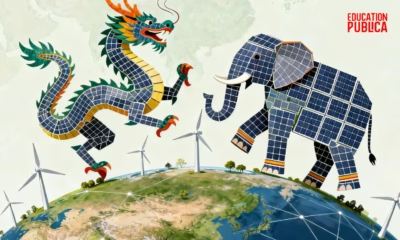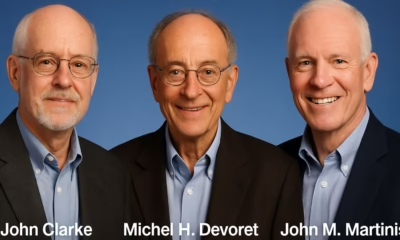EDUNEWS & VIEWS
India: Big Science in the 20th century and beyond
In this blog post, Ed Publica’s Science Editor, Karthik Vinod, skims over some of the state-funded science projects in India that existed before and after independence.
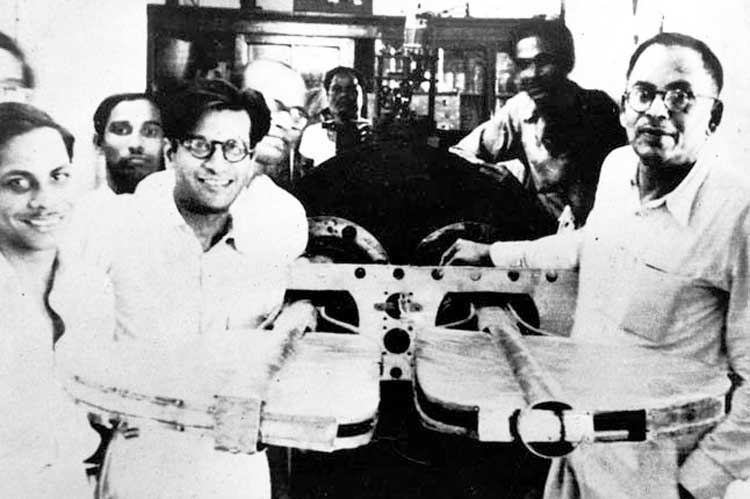
Science after World War II
Scientific research changed forever in the aftermath of the World War II. Nuclear weapons entered the fray, and scientists worked – not alone anymore – but now in groups rivalling organizations. Governments walked in for the first time, institutionalizing science as a state-project. In the US, Vannevar Bush’s Science: the Endless Frontier advocated for a dichotomy within science, between applied and basic research. India soon advocated for something Though flawed, it’s a blueprint used across the world, including in India. But it needs to change.
Following independence, Jawaharlal Nehru, India’s first prime minister, resorted to building centralized institutions across the country, with the Indian Institute of Technologies (IITs) being famous amongst those pursuing a technical stream. Along with the Indian Institute of Science (IISc.), they’ve attracted the country’s most meritorious and bright students. Nehru viewed and appreciated scientific thinking as a “way of life” and an aspect that’ll break the shackles of superstitious belief in many Indians. He popularized the phrase “scientific temper”, which was later amended into the Indian constitution by his daughter and late prime minister, Indira Gandhi. However, this was during the Emergency Period, when democracy was curtailed, dissidents were imprisoned, and mass sterilization campaigns castrated many men against their will.
Keeping political hypocrisy aside, the administrations since then hasn’t picked up much steam either on being serious about its fundamental scientific research. This is not to say there hasn’t been marvels in technological innovation. Vikram Sarabhai, the technocrat scientist and aristocrat, who helped seed incentives for the country to invest in a space program, envisioned science and technology to enable Indians use of state-of-the-art technology, without going through the rudimentary “stages of growth” that was thought to plague many developing nations. The Indian Space Research Organization (ISRO) builds satellites and rockets, and has been the harbinger rather in public eye for the country’s assertive rise as a space power. Fundamental science research has taken a backseat, with funding woes and political apathy felt even today.
Funding for ISRO virtually trumps anything else that churns in public scientific institutions. Though this is a common attributed share among space faring nations, India’s amongst the lower tier of nations that spends on research and development (R&D) – constituting just 0.64% of the Indian economy, and a continuing decline in funds allocated in yesteryears. India’s next door neighbor China spends some 2.4%, and both the US and UK spend either 3% or more per year.
It’s not like India doesn’t have illustrious or even seminal scientific contributions in the modern age. Scientific research did flourish in British India, amongst a few practitioners, benefitting from uninterrupted time in their laboratories with relatively cheap equipment– as with experimentalists such as Jagdish Chandra Bose and C.V. Raman; to name a few, or theorists including Meghnad Saha and S.N. Bose. Today though, these names remain largely confined to history in public discourse.
Science in pre-independent India
The imperial capital of science in India, Calcutta, was home to top-tier frontier research in quantum mechanics in the early 20th century. In the 1920s, Satyendra Nath Bose, a theorist, solved a particular problem related to the blackbody radiation law that evaded even Einstein. Bose, whom we profiled in our Know the Scientist page, fostered a collaboration with Einstein, culminating in numerous theoretical advances in quantum statistics, especially predicting the fifth state of matter, the Bose-Einstein condensate. Paul Dirac, the English physicist, coined the name bosons, after the class of quantum particles with integer spins, that Bose and Einstein’s statistics describe properties. It was one of these bosons (a word-play on “Bose-ons”) that particle physicists confirmed at the Large Hadron Collider (LHC) in Geneva, Switzerland in 2012.
Science during British India was top-notch, and continued its trend in the immediate aftermath of Indian independence. In 1948, Calcutta was abuzz again, but now with a cyclotron that they were building. A cyclotron’s a device that accelerates particles to near light-speed in the presence of electromagnetic fields, thereby producing radiation. It aided in frontier research in nuclear physics, for example, measuring cross-sections of the uranium nucleus (U-235). Housed at the Saha Institute of Nuclear Physics, accelerator physicists received funding to build a bigger cyclotron at the Variable Energy Cyclotron Centre, touching energies in the MeV range. Today, it’s part of the International Radioactive Ion Beam consortium, helping spread India’s fundamental research reach across the world.
So far, there’s been little coverage about the research in much of central universities and research institutions. It’s surprising how Bose’s contribution to quantum theory found no mention in India’s media discourse. Indian science hasn’t had limelight, not because there’s little research output – though there’s a case to make, as many has made before – but there’s a need for science communicators and journalists to help bridge that gap that exists between scientists and the public. The government has shown little consideration to extend science communication beyond publishing white papers about its importance.
Scientist or engineer?
Media representation of science is confused. The space program, that receives much public adulation and emblematic of national pride, is wrongly perceived as a scientific institution. Space engineers have become scientists in the public eye, despite rocket and satellite development is a matter of engineering, and not science. The former Indian president and “ISRO scientist” Abdul Kalam wasn’t a scientist per se, but an aerospace engineer. Barely mentioned in our public discourse are scientists that’ve done commendable research across the sciences.
Science done in central or local institutions for that matter hasn’t shared the limelight, anywhere as ISRO has since Independence. It’s the government’s pet, and has shaped narratives of technological innovation within and outside India. But this is largely technology history, without much scientific imperative.
Taking initiative
On the flip side, there’s much smaller science projects, that does combine the best of both worlds, combining technology development and science; thus blurring the dichotomy between applied and basic science research.
Govind Swarup, an Indian astronomer, worshiped by his peers as a “father of Indian radio astronomy” had voiced for a radio observatory, the first of its kind in Asia, to be constructed in the 1950s. The Indian government wasn’t interested, unless the astronomers received funds from sponsor countries. Australia had offered to pay and construct, after a long tussle, following which either party withdrew from discussions.
It was not until the 1980s, did India commence building an indigenous radio telescope. In 1995, the country’s first radio telescope, the Great Metrewave Radio Telescope (GMRT) was operational after a decade of construction. The team at GMRT contributed to the first detections of the cosmic gravitational wave background with its European radio astronomy counterparts in the Pulsar Timing Array project.
In 2016, the Indian astronomy community were greenlit to construct a gravitational wave detector in Pune, following confirmation of gravitational waves in February that year. Though this project too bas been plagued by successive delay construction would supposedly take off soon (perhaps late this year). In light of these late developments, politicians and scientists have begun beating the drums about the potential economic impact from involving Indian industry in the construction of the detector – utilizing state-of-the-art quantum technologies – in partnership with international teams. For the scientific community, precious data from the detector is incentive for attracting and inspiring the country’s emerging scientific talent.
Meanwhile, there’ve been hurdles that’ve prevented few other projects from taking off. The India-based Neutrino Observatory (INO), in Tamil Nadu, is one glaring example. Poor policy making amid environmental concerns that wasn’t addressed in time has forestalled construction for more than a decade. In this case rather, neither scientist nor policy maker bothered to engage with the public and hear out their concerns. And it takes much more development in science policies and public engagement to resolve these systemic issues.
EDUNEWS & VIEWS
Teacher Strength in India Crosses One Crore for the First Time
India’s teacher count crosses one crore in 2024-25, improving pupil-teacher ratios and female participation amid changing student enrolment trends.
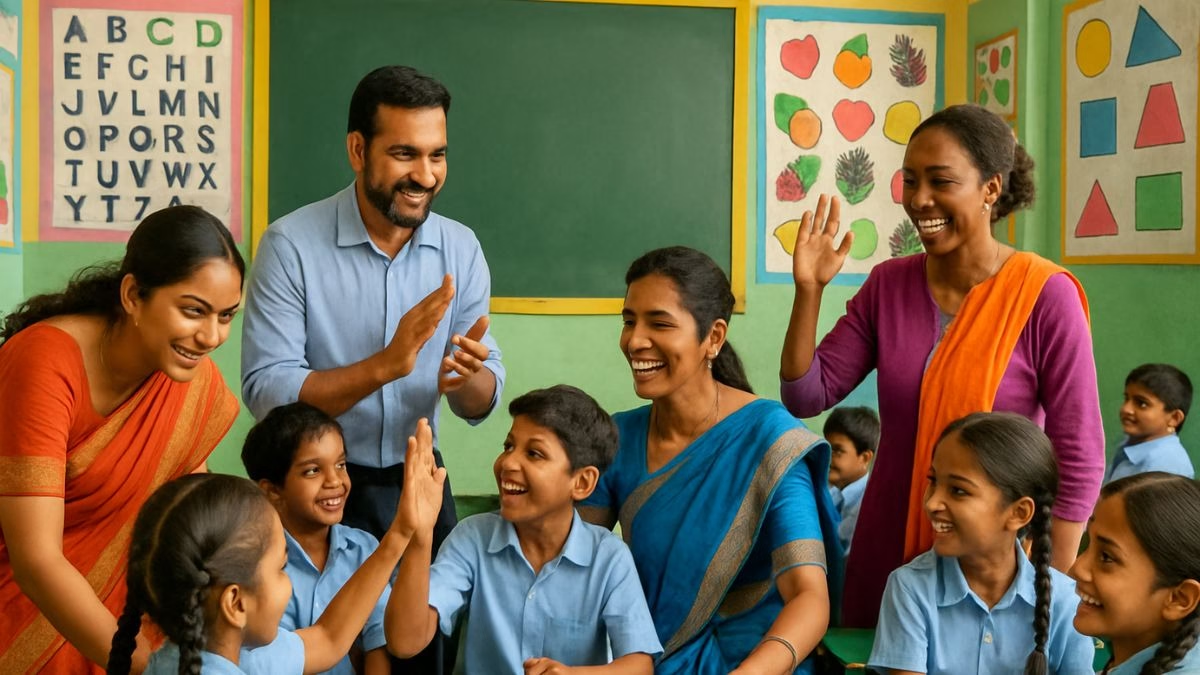
For the first time in India’s academic history, the total number of school teachers in the country has crossed the one crore mark in the academic year 2024-25. This milestone was highlighted in the Unified District Information System for Education Plus (UDISE+) report released by the Ministry of Education on school education.
According to the report, this represents a 6.7 percent increase in the teacher workforce compared to 2022-23. The data further reflects the scale of India’s education system, which now comprises nearly 15 lakh schools catering to over 24 crore students across the country.
The enrolment pattern shows that nearly 50 percent of students are studying in government schools, followed by 41 percent in private institutions, with the rest enrolled in government-aided schools. Encouragingly, female representation among teachers has risen to 54.3 percent, while girls’ enrolment has reached 48.3 percent.
Better student-teacher ratios and declining dropouts
One of the most significant improvements reported is in the Pupil-Teacher Ratio (PTR). At the foundational, preparatory, middle, and secondary levels, the ratios now stand at 10, 13, 17, and 21 respectively, showing marked progress in easing classroom loads for teachers.
The Ministry also reported steady gains in dropout rates, student retention, and Gross Enrolment Ratios, indicating that schools are doing more to support students and keep them in the education system. Special attention has also been given to phasing out zero-enrolment and single-teacher schools, with better infrastructure additions enhancing the overall schooling environment.
Highlighting the broader significance of these trends, the Education Ministry stated that the growing teacher workforce is a critical step in ensuring equitable access and quality in education. Increased teacher availability is expected to improve classroom engagement, reduce regional disparities, and help address learning gaps. Schools, the report noted, are now becoming “more supportive and responsive to students’ needs,” which has also contributed to a reduction in early dropouts and greater inclusivity.
With the teacher count crossing the one-crore landmark and school indicators showing a positive trajectory, the government emphasized that the coming years will focus on consolidating these gains and ensuring that every child in India has the opportunity to access quality education.
Currently, India’s school system serves around 24.7 crore students across approximately 14.7 lakh schools, aligning closely with official numbers but reflecting a slight decline in enrolment compared to previous years. The overall student enrolment in 2024-25 marks a seven-year low, falling by about 11 lakh students compared to 2023-24. This drop is notably pronounced at the primary level (classes 1 to 5), which alone saw a decline of roughly 34 lakh students from the previous academic year. Key states like Uttar Pradesh, Bihar, Rajasthan, West Bengal, and Maharashtra reported some of the steepest enrolment declines, contributing to this national trend.
Government schools now account for about 50 percent of enrolment, though some states have witnessed a significant shift of students from government to private schools. This shift has raised concerns about the government’s capacity to retain students in public schools, with efforts underway to address infrastructural and quality gaps.
On the positive side, there has been progress in girls’ education with girls’ enrolment hovering near 48 percent nationally. The Net Enrolment Ratio (NER) for girls at primary education stands at approximately 90 percent, indicating a high level of age-appropriate enrolment. The secondary and higher secondary levels have shown improvement as well, aligning with the National Education Policy’s target of universal enrolment by 2030.
EDUNEWS & VIEWS
India’s Dhirubhai Ambani School Ranked Among Top Global Highschools
Founded in 2003, India’s Dhirubhai Ambani International School is also one of the youngest schools to feature in the rankings.
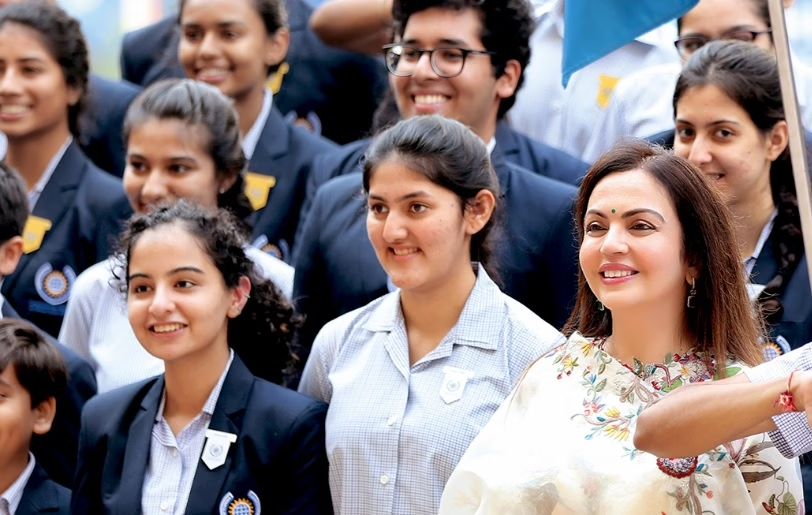
India’s Dhirubhai Ambani International School in Mumbai continues to shine on the global education stage, ranking fifth among schools outside the US and UK in the 2025 HSBC Hurun Education Global Highschools list. Founded in 2003, it is also one of the youngest schools to feature in the rankings.
The report emphasizes schools’ performance based on alumni university destinations, co-curricular development, and institutional reputation. With 190,000 students across the 180 ranked schools, only 0.6% of those listed are from India, underscoring the school’s elite standing.
In a media statement, Rupert Hoogewerf stated, “The list recognizes schools adding the most value to students’ futures. India’s presence through DAIS highlights the global competitiveness of select institutions in the country.”
Dhirubhai Ambani School joins a select group that includes Seoul International School, Chinese International School (HK), and Kolej Tuanku Ja’afar (Malaysia) in representing Asia outside China.
EDUNEWS & VIEWS
Global Highschool Rankings 2025: UK and US Dominate, China Rises
Among the standout institutions, Westminster School maintained its dominance with over 40% of graduates entering Oxbridge
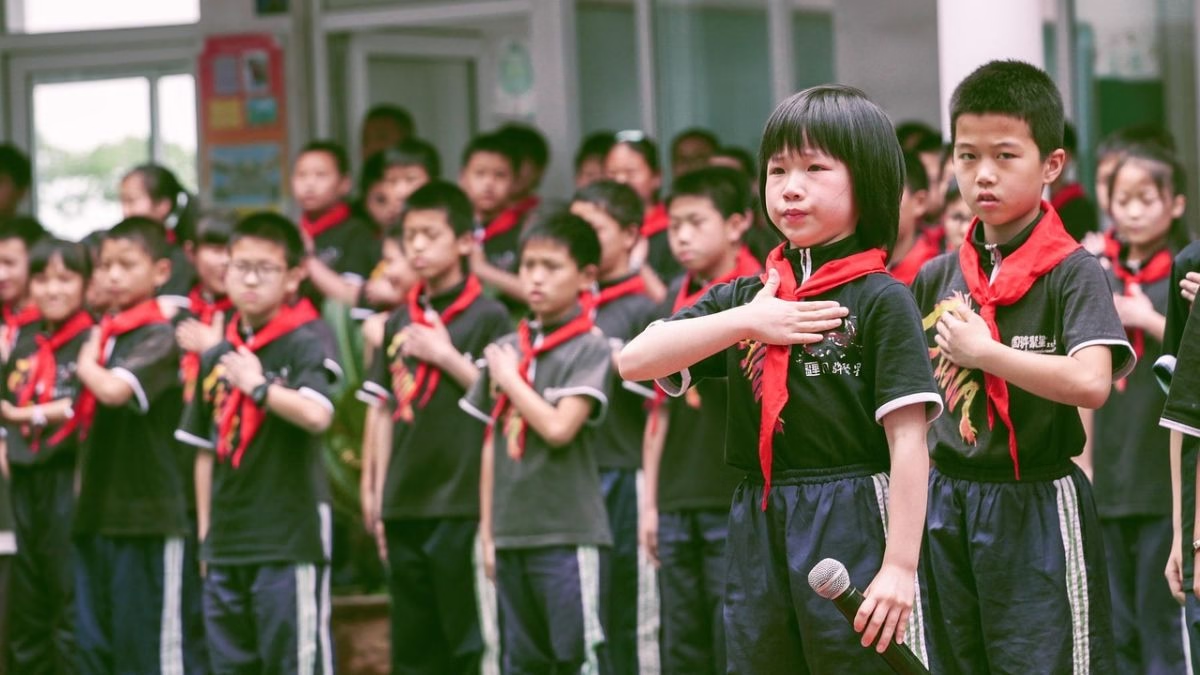
In a global assessment of elite high schools, the HSBC Hurun Education Global High Schools 2025 report has named Westminster School in London as the world’s best high school for the third consecutive year. The annual ranking, now in its third edition, evaluates the top 180 independent schools across 11 countries based on university placements, co-curricular development, and institutional reputation.
The list reflects a shifting but still concentrated landscape of educational excellence. The United States and the United Kingdom together accounted for 85% of the world’s top highschools, with the US leading at 45% and the UK at 40%. However, China emerged as a strong contender, ranking third with 16 schools—up from 13 last year.
“The number of Chinese students studying abroad fell last year, but there are still nearly one million,” said Rupert Hoogewerf, Chairman and Chief Researcher of Hurun Education. “Interestingly, with 16 top-ranked highschools, Chinese families are finding viable options closer to home—avoiding time zone issues and maintaining cultural continuity.”
Among the standout institutions, Westminster School maintained its dominance with over 40% of graduates entering Oxbridge. St Paul’s School rose to second place, while The Dalton School in New York dropped to third. Notably, Winchester College returned to the top 10 and was named the world’s best boarding school, surpassing even Eton College and Phillips Andover.
“These rankings offer forward-looking insights for families planning their children’s international education,” said Kai Zhang, Head of International Wealth and Premier Banking, HSBC Asia, in a media statement. “Destinations like Hong Kong and Singapore are becoming increasingly attractive for their proximity and cultural alignment with Asian families.”
The report also revealed evolving trends in school environments and demographics:
>> 70% of the schools are co-educational, with a growing shift among historically boys-only UK schools admitting girls.
>> 51% offer boarding options, while half remain day schools.
>> The average school size was 1,050 students, with 140 graduating each year.
>> The average age of these schools is 204 years, with some—like King’s School, Canterbury—tracing roots back over a millennium.
Meanwhile, India’s Dhirubhai Ambani International School in Mumbai ranked 5th among schools outside the US and UK, continuing its position as a global outlier in quality private education from the subcontinent.
Despite steep tuition fees—averaging $63,000 annually for boarding schools—demand for places remains high. However, the UK’s recent addition of VAT on private school fees has prompted concerns, with schools like Winchester now costing over $80,000 per year.
Another key theme this year is the integration of creative thinking and AI literacy in education. “There is a real push toward STEAM, adding ‘Arts’ to STEM. Schools are under pressure to future-proof education and prepare students to thrive in the 2050s,” Hoogewerf added.
With data drawn from university destinations, co-curricular achievements, and alumni impact, the HSBC Hurun rankings offer more than a leaderboard—they reflect the evolving priorities and challenges in elite education worldwide.
-

 Space & Physics5 months ago
Space & Physics5 months agoIs Time Travel Possible? Exploring the Science Behind the Concept
-

 Earth6 months ago
Earth6 months ago122 Forests, 3.2 Million Trees: How One Man Built the World’s Largest Miyawaki Forest
-

 Space & Physics6 months ago
Space & Physics6 months agoDid JWST detect “signs of life” in an alien planet?
-

 Know The Scientist5 months ago
Know The Scientist5 months agoNarlikar – the rare Indian scientist who penned short stories
-

 Society4 months ago
Society4 months agoShukla is now India’s first astronaut in decades to visit outer space
-

 Society4 months ago
Society4 months agoAxiom-4 will see an Indian astronaut depart for outer space after 41 years
-

 Earth4 months ago
Earth4 months agoWorld Environment Day 2025: “Beating plastic pollution”
-

 Society6 months ago
Society6 months agoRabies, Bites, and Policy Gaps: One Woman’s Humane Fight for Kerala’s Stray Dogs

